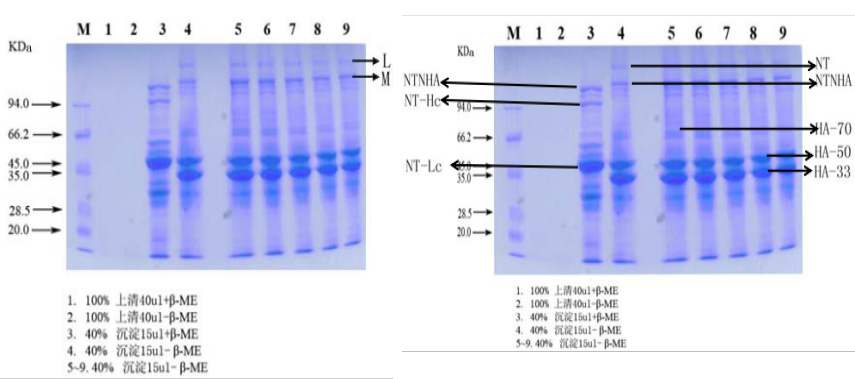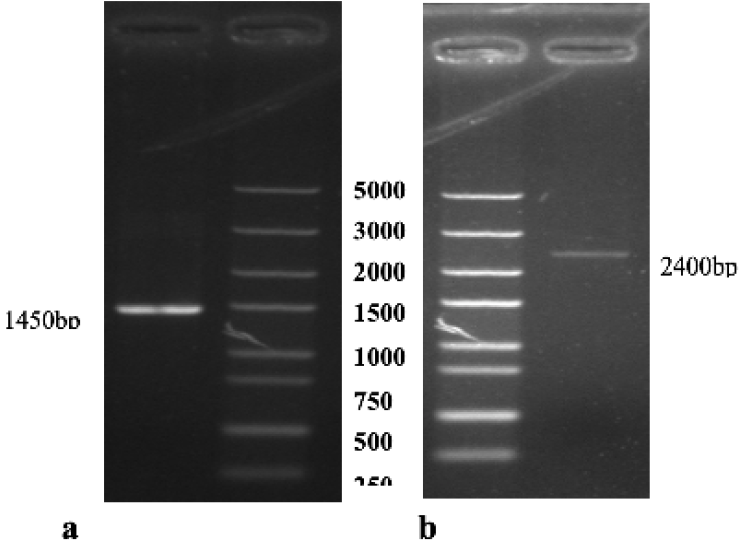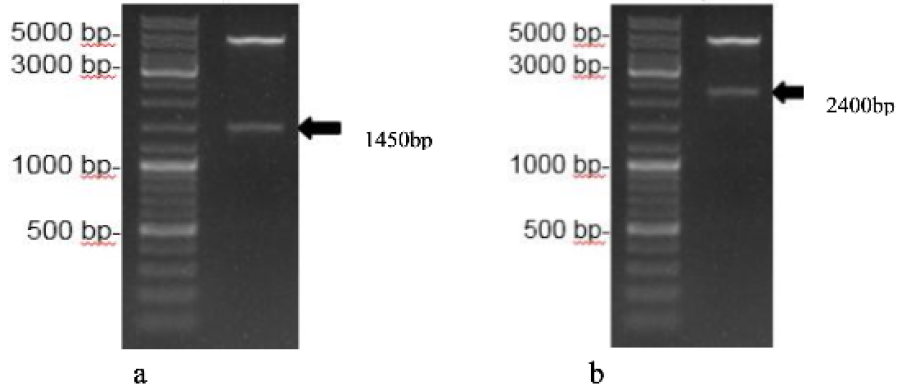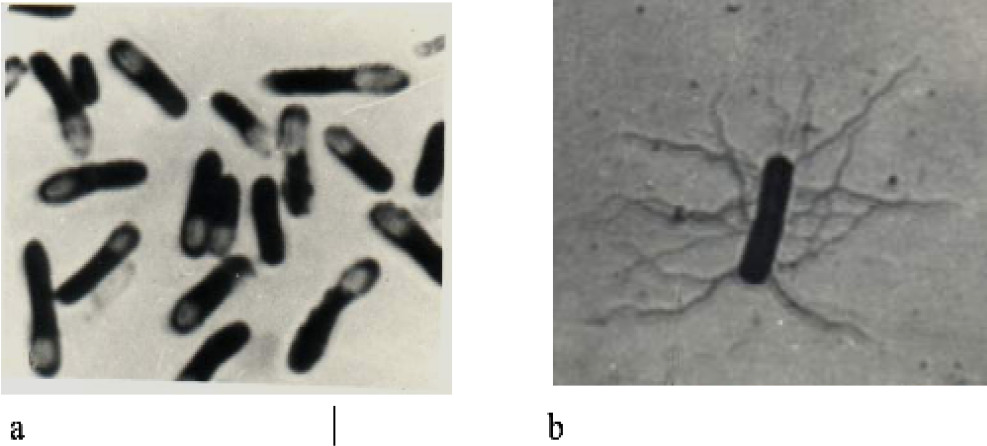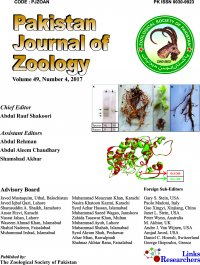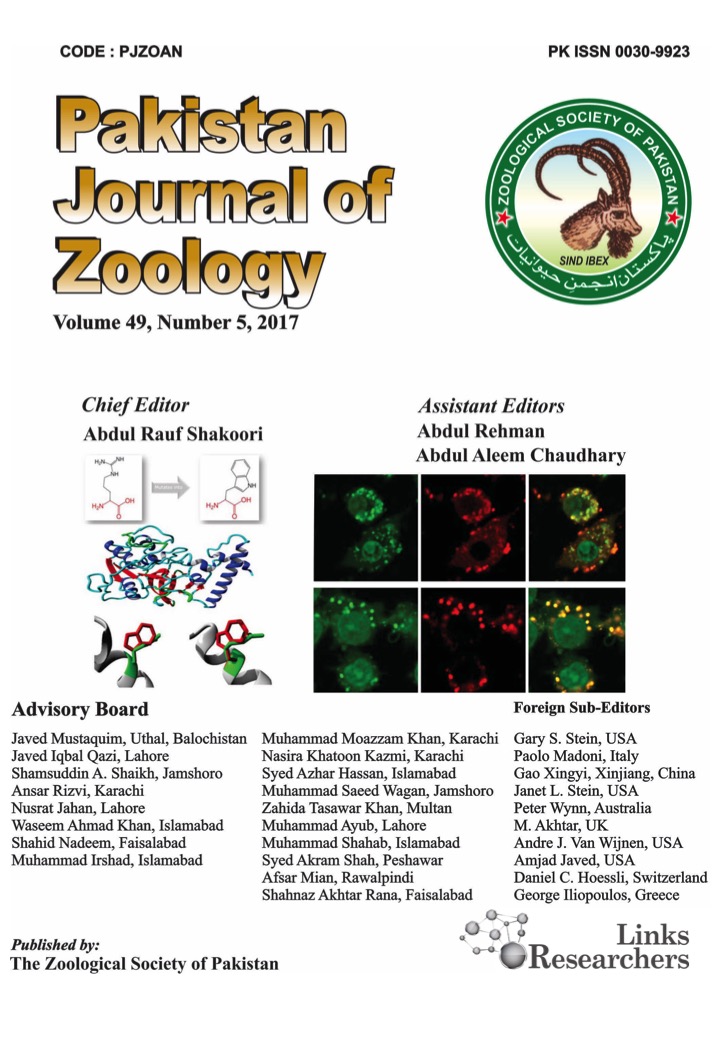Feasibility of Type D Botulinum Toxin for Rodent Prevention and Control in Plateau Pastoral Areas
Feasibility of Type D Botulinum Toxin for Rodent Prevention and Control in Plateau Pastoral Areas
Li Shengqing1,2,3, Zhang Xiyun2,3, Liu Shengcai2,3, Hu Guoyuan2, Fan Yuxia2,Liu Huaixin2, Wang Tingting2 and Zhang Yanming1*
Schematic of the plot test of type D botulinum toxin administration to plateau zokors; A, 20,000 MLD/g granular bait; B, 10,000 MLD/g barley bait; C, 15,000 MLD/g barley bait; D, 20,000 MLD/g barley bait; CK, 50 m isolation belt.
SDS-PAGE results for the components of type D8901 botulinum in 40% ammonium sulfate. 1, 100% supernatant40µĺ+β-ME; 2, 100% supernatant40µĺ-β-ME; 3, 40% supernatant15µĺ+β-ME; 4, 40% supernatant15µĺ-β-ME; 5-9, 40% supernatant 15µĺ-β-ME.
Electrophoretic analysis of gene fragment of botulinum neurotoxin type D.
(a) Plasmid identification after BT1 cloning, (b) Plasmid identification after BT2 cloning. BT1, light chain fragment; BT2, Heavy chain fragment.
Protein functional domain composition of botulinum toxin.
Morphological characteristics (Micrograph (a) and electron micrograph (b)) of Clostridium botulinum.
(a), Grassland damage caused by plateau pika; (b), Mound caused by plateau zokor.








